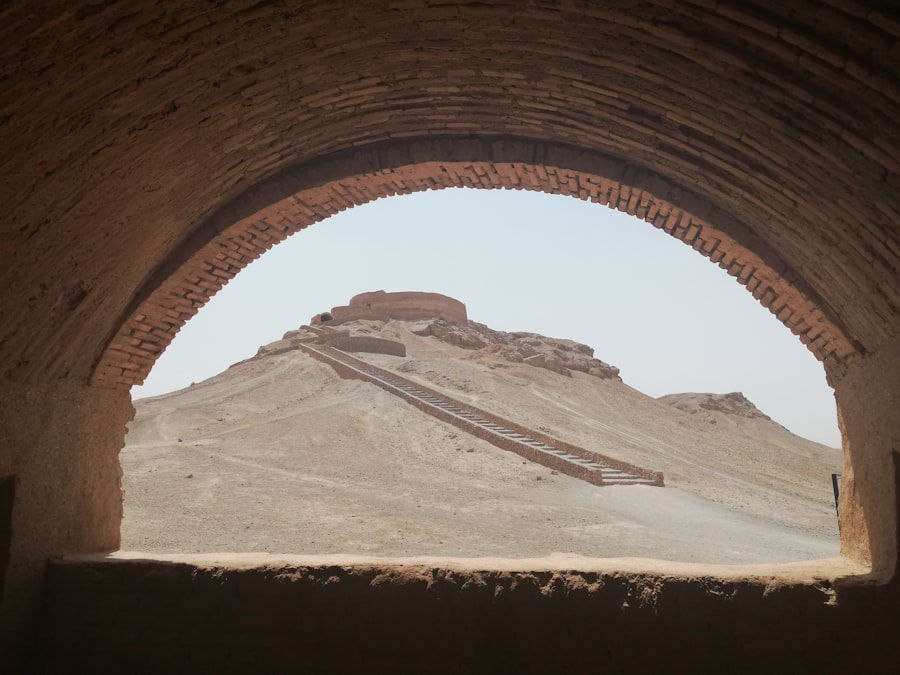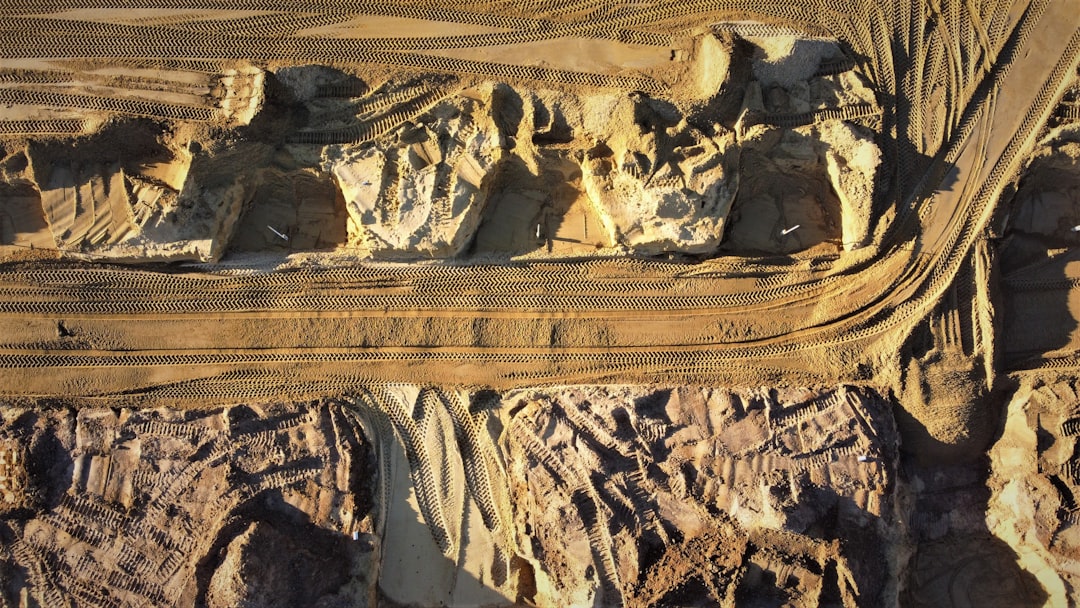Tutankhamun’s tomb, discovered in 1922 by British archaeologist Howard Carter, remains one of the most significant archaeological finds in history. Nestled within the Valley of the Kings in Egypt, this burial site has captivated the imagination of scholars and the public alike. The tomb, designated KV62, was found largely intact, containing a wealth of artifacts that provided invaluable insights into ancient Egyptian culture, art, and burial practices.
The treasures unearthed from this site, including the iconic golden mask of the young pharaoh, have become symbols of ancient Egypt’s grandeur and mystery. The significance of Tutankhamun’s tomb extends beyond its material wealth; it serves as a window into the life and times of a young ruler who ascended to the throne at a tender age and died under mysterious circumstances. The tomb’s discovery sparked a renewed interest in Egyptology and has led to ongoing research and exploration in the region.
As scholars continue to study the artifacts and the tomb itself, new technologies have emerged that promise to deepen understanding of this remarkable site. Among these technologies is Ground Penetrating Radar (GPR), which has recently been employed to explore the tomb further and potentially uncover hidden chambers.
Key Takeaways
- Conflicting Ground Penetrating Radar (GPR) scans have raised questions about the structure of Tutankhamun’s tomb.
- GPR technology is crucial for non-invasive archaeological exploration but can produce varying results.
- Initial and subsequent GPR scans showed discrepancies, prompting further analysis.
- Understanding these conflicting scans is vital for accurate interpretation of the tomb’s layout and potential undiscovered chambers.
- Resolving these conflicts will guide future archaeological methods and enhance knowledge of Tutankhamun’s tomb’s significance.
The Discovery of Conflicting GPR Scans
In recent years, the application of Ground Penetrating Radar (GPR) technology has led to intriguing developments regarding Tutankhamun’s tomb. Initial scans conducted by various teams suggested the presence of hidden chambers or voids within the structure, igniting excitement among archaeologists and historians. However, subsequent scans produced conflicting results, leading to a complex debate within the archaeological community.
These discrepancies have raised questions about the reliability of GPR technology in archaeological contexts and have sparked discussions about the methodologies employed in such investigations. The conflicting GPR scans have not only fueled academic discourse but have also captured public interest. The idea that there may be undiscovered chambers within one of history’s most famous tombs is tantalizing.
It evokes images of hidden treasures and further secrets about Tutankhamun’s life and death waiting to be revealed. As researchers grapple with these conflicting results, they are compelled to reassess their approaches to using GPR technology in archaeological exploration, particularly in such a historically significant site.
Explanation of Ground Penetrating Radar (GPR)

Ground Penetrating Radar (GPR) is a non-invasive geophysical method that employs radar pulses to image the subsurface. This technology has gained traction in various fields, including archaeology, due to its ability to provide detailed images of buried structures without disturbing the ground. GPR works by sending high-frequency radio waves into the ground; when these waves encounter different materials or interfaces, they are reflected back to the surface.
The data collected can then be analyzed to create images that reveal the presence of voids, artifacts, or other features beneath the surface. In archaeological contexts, GPR is particularly valuable because it allows researchers to explore sites without excavation, preserving their integrity while still gathering critical information. This method has been used successfully in various archaeological projects around the world, helping to locate ancient structures, burial sites, and other significant features.
However, interpreting GPR data can be complex, as various factors—such as soil composition, moisture content, and depth—can influence the results. As such, while GPR is a powerful tool, it requires careful analysis and corroboration with other archaeological evidence.
Initial GPR Scan Results
| Scan Location | Depth Range (m) | Detected Anomalies | Signal Strength (dB) | Comments |
|---|---|---|---|---|
| Site A – North Sector | 0.5 – 3.0 | 3 | -45 | Possible buried utilities detected |
| Site A – East Sector | 0.3 – 2.5 | 1 | -50 | Single anomaly, likely rock formation |
| Site B – Central Area | 0.7 – 4.0 | 5 | -40 | Multiple anomalies, further investigation recommended |
| Site B – South Sector | 0.2 – 2.0 | 0 | -55 | No significant anomalies detected |
The initial GPR scans conducted around Tutankhamun’s tomb generated considerable excitement within the archaeological community. These early results indicated potential anomalies beneath the surface that could suggest the existence of hidden chambers or additional burial sites associated with the young pharaoh. Researchers noted unusual reflections that appeared to indicate voids or spaces not accounted for in previous studies of KV62.
This discovery led to speculation about what might lie hidden within the tomb’s walls and fueled hopes for further revelations about Tutankhamun’s life and burial practices. The implications of these initial findings were profound. If additional chambers were indeed present, they could potentially contain more artifacts or even additional mummies, shedding light on the funerary practices of ancient Egypt.
The prospect of uncovering new information about Tutankhamun’s reign and the religious beliefs surrounding death and the afterlife was exhilarating for historians and archaeologists alike. However, as excitement mounted over these initial results, researchers were also aware of the need for caution in interpreting GPR data, recognizing that further investigation was necessary to validate these findings.
Subsequent GPR Scan Results
Following the initial scans that hinted at hidden chambers within Tutankhamun’s tomb, subsequent GPR investigations yielded results that contradicted earlier findings. These later scans suggested a lack of significant anomalies beneath the surface, leading some researchers to question the validity of the initial interpretations. The discrepancies between these sets of results created a sense of uncertainty within the archaeological community regarding what lay beneath KV62.
This situation highlighted the complexities involved in using GPR technology for archaeological exploration. The conflicting results from subsequent scans prompted researchers to delve deeper into their methodologies and data interpretation processes. Some scholars posited that variations in soil conditions or equipment settings could account for the differences observed between scans.
Others suggested that more advanced techniques or additional data collection might be necessary to clarify the situation. As discussions continued, it became clear that resolving these conflicting results would require collaboration among experts in GPR technology and Egyptology.
Analysis of Conflicting GPR Scans

The analysis of conflicting GPR scans surrounding Tutankhamun’s tomb has become a focal point for researchers seeking to understand both the technology itself and its application in archaeology. The discrepancies between initial and subsequent scans raise important questions about data interpretation and methodological rigor in archaeological investigations. Scholars have begun to examine factors such as equipment calibration, operator experience, and environmental conditions that may have influenced the results.
Moreover, this situation underscores the necessity for interdisciplinary collaboration in archaeology. By bringing together experts in geophysics, archaeology, and data analysis, researchers can develop more robust methodologies for interpreting GPR data. This collaborative approach may lead to improved accuracy in identifying subsurface features and ultimately enhance understanding of significant archaeological sites like Tutankhamun’s tomb.
Potential Reasons for Conflicting Results
Several potential reasons have been proposed to explain the conflicting results obtained from GPR scans around Tutankhamun’s tomb. One possibility is that variations in soil composition and moisture levels could affect how radar waves are transmitted and reflected back to the surface. Different materials can produce varying degrees of signal attenuation or reflection, leading to discrepancies in scan results.
Additionally, changes in environmental conditions during different scanning sessions may have influenced data quality. Another factor that may contribute to conflicting results is the complexity of interpreting GPR data itself. The presence of multiple layers of sediment or structural elements can create overlapping signals that complicate analysis.
Furthermore, operator expertise plays a crucial role; inexperienced operators may misinterpret data or fail to recognize subtle anomalies indicative of hidden features. As researchers continue to investigate these potential reasons for conflicting results, they are reminded of the importance of rigorous training and standardized protocols in conducting GPR surveys.
Impact on Understanding Tutankhamun’s Tomb
The conflicting GPR scan results have significant implications for understanding Tutankhamun’s tomb and its historical context. If hidden chambers do exist within KV62, they could provide new insights into ancient Egyptian burial practices and beliefs surrounding death and the afterlife. Conversely, if subsequent scans prove accurate in suggesting that no additional chambers are present, it may prompt a reevaluation of previous assumptions about the tomb’s layout and contents.
This ongoing debate highlights the dynamic nature of archaeological research; new technologies can both illuminate and complicate our understanding of historical sites. As scholars grapple with these conflicting findings, they are reminded that archaeology is an evolving field where interpretations can shift based on new evidence or methodologies. The quest for knowledge about Tutankhamun’s tomb continues to inspire researchers to seek innovative approaches to uncovering its secrets.
Future Steps for Resolving Conflicting Scans
To resolve the conflicting GPR scan results surrounding Tutankhamun’s tomb, researchers must adopt a multifaceted approach that combines advanced technology with rigorous analysis. Future steps may include conducting additional GPR surveys using improved equipment or techniques that enhance data resolution and accuracy. Collaborating with experts in geophysics can help refine methodologies and ensure consistent data interpretation across different scanning sessions.
Moreover, integrating GPR findings with other archaeological methods—such as excavation or historical analysis—can provide a more comprehensive understanding of KV62. By triangulating evidence from multiple sources, researchers can build a clearer picture of what lies beneath the surface and address any discrepancies observed in GPR data.
Importance of Tutankhamun’s Tomb in Archaeology
Tutankhamun’s tomb holds immense importance in archaeology due to its rich historical context and the wealth of artifacts it contains. The discovery of KV62 revolutionized Egyptology by providing unprecedented insights into ancient Egyptian culture, art, and funerary practices during a pivotal period in history. The treasures found within the tomb have become iconic symbols of ancient Egypt’s grandeur and continue to captivate audiences worldwide.
Furthermore, Tutankhamun’s tomb serves as a case study for modern archaeological techniques and technologies like GPR. The ongoing exploration of this site highlights both the potential and limitations of contemporary methods in uncovering historical truths. As researchers strive to unravel the mysteries surrounding Tutankhamun’s life and death, they contribute not only to our understanding of this specific pharaoh but also to broader discussions about ancient civilizations and their legacies.
Conclusion and Implications for Archaeological Research
In conclusion, the conflicting GPR scan results surrounding Tutankhamun’s tomb underscore both the promise and challenges inherent in modern archaeological research. While initial scans suggested exciting possibilities regarding hidden chambers within KV62, subsequent findings have prompted critical reflection on data interpretation and methodological rigor. As scholars work collaboratively to resolve these discrepancies, they are reminded of the dynamic nature of archaeology—a field where new technologies can both illuminate and complicate our understanding of history.
The implications of this ongoing investigation extend beyond Tutankhamun’s tomb; they highlight the importance of interdisciplinary collaboration in archaeology and emphasize the need for continued innovation in research methodologies. As researchers strive to uncover new insights into ancient civilizations through advanced technologies like GPR, they contribute not only to our knowledge of specific sites but also to the broader narrative of human history. Ultimately, the quest for understanding Tutankhamun’s tomb serves as a testament to humanity’s enduring fascination with its past and the relentless pursuit of knowledge that defines archaeological inquiry.
Recent studies of the GPR scans conducted in Tutankhamun’s tomb have revealed conflicting interpretations, sparking debate among archaeologists and historians.
